photo by N.Lewis
We buy and sell, we plan and build, we tear down and we build again. And through it all, we tend to keep our noses to the grindstone. Consumed by the small things, it’s easy to forget sometimes where we left the big things. Or that big things even exist at all. They do.
That simple fact is the reason we have a National Park system. Its founders knew how important preserving wilderness and grandeur would be. They made it possible for us to have places not too far from our own backyards where we can find food for the spirit—places that are vast, and humbling, and exhilarating, and essential. A National Park is a public declaration that these places are worth the effort it takes to sustain them.
Sustaining is what we do. With your help in 2012, we’ve funded projects to defend Shenandoah National Park against invasive species, to teach the effects of varied weather patterns on park habitats, and to inspire teachers to carry the message of stewardship to new generations of students.
We’ve built and nurtured partnerships with local, regional, and national organizations that strengthen and extend our efforts on behalf of the Park. We’ve opened new opportunities for visitors to participate in the life of the Park, and found new avenues of engagement with constituencies all over our region—and the nation.
Funding Projects
Private philanthropy has been a part of the building of the National Park system from its inception. Park partner groups like the SNPT keep that tradition alive and growing. Our funding supported three significant Park initiatives in 2012.
Environmental Education
Park scientists have begun to pay close attention to the ways that varied weather patterns affect high-elevation species. At the top of the list is the Shenandoah Salamander, an endangered, three-inch amphibian that lives only within the boundaries of the Park. SNPT funding is now bringing that research to the public through ranger programs, fireside chats, and new electronic resources available nationwide.
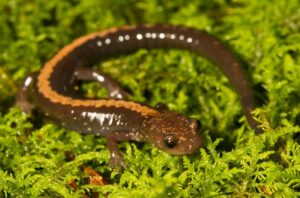
photo by Ann and Rob Simpson
Forest Restoration
Invasive species like Japanese stilt grass and mile-a-minute vine disrupt and threaten complex native ecosystems that have developed over millions of years. SNPT funding assists park managers in controlling exotic plants, and re-establishing native species in high-priority areas. This work is of such vital importance to the health of the Park that we’ve now re-upped our commitment for another five years of funding.
Teacher Ranger Teacher
Engaging teachers in the life of the Park is a great multiplier. Teacher Ranger Teacher brings classroom teachers into the Park for two summers, where they work directly with Park Rangers to develop educational programs. They return to their classrooms and pass their knowledge and enthusiasm directly to a new generation of citizens and stewards.
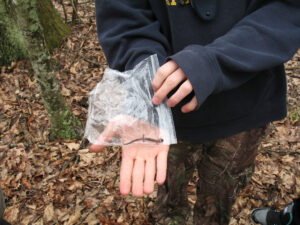
Forging Partnerships
SNPT’s philanthropic mission includes building partnerships with other organizations in support of the Park and its programs. These partnerships extend our reach and bring the power of larger numbers of committed people to bear the challenges and opportunities that face the Park.
Smithsonian Conservation Biology Institute
A partnership started in 2011 as a joint fundraising effort between Smithsonian Conservation Biology Institute (SCBI), SNPT and the Piedmont Environmental Council(PEC) blossomed into something more in 2012. As a direct result, natural resources staff from the Park have begun meeting with ecologists from SCBI to develop strategies for sharing staff, funding, training, and data. The plans include collaborative surveys of Shenandoah wildlife like the wood turtle and pine snakes, as well as a new effort to document under-studied species.
The Nature Conservancy
Nature has her own rules, and ecosystems don’t notice boundaries. So, when TNC heard about our Forest Restoration Project in 2012, they realized that their efforts to control invasive plants in communities outside the Park would benefit from our work inside the Park. As a result, they’ve matched our funding and helped support the next five years extend the work for another five years.
National Park Foundation
In 2012 SNPT was one of a handful of park partner groups to collaborate with the NPF on organizational development. We’ve been using that work to increase our capacities and strengthen partnerships with sister groups across the country. Building capacity means we can do more in support of the Park we love—more programs, more outreach, more funding.
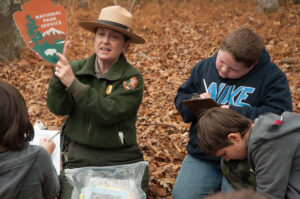
Fostering Engagement
Part of what SNPT does is to open new avenues of engagement for the public, creating more opportunities for people to participate in the life of the Park. In 2012, those efforts included:
100 Mile Club
Members have the chance to participate in guided hikes within the Park every month. Hikers log their miles, and earn perks for hiking 25, 50, 75, and 100 miles.
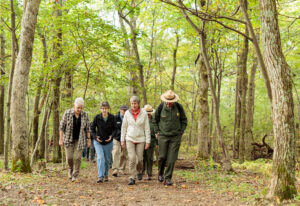
photo by N.Lewis
License Plates
The incredibly popular Shenandoah National Park license plate became available for motorcycles in 2012. They continue to raise funds for the Park, to raise the profile of the Park, and allow folks to wear their pride for the Park, everywhere they go on the roads of Virginia and beyond.
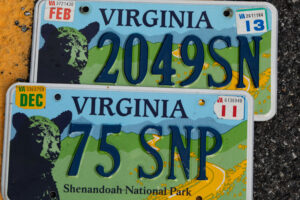
Touring Photo Exhibit
As a way of bringing the beauty of Shenandoah to the places people live and work, we’ve assembled winning photographs from a number of regional competitions. The exhibit has been on display, underlining the beauty of Shenandoah, in communities surrounding the Park.

